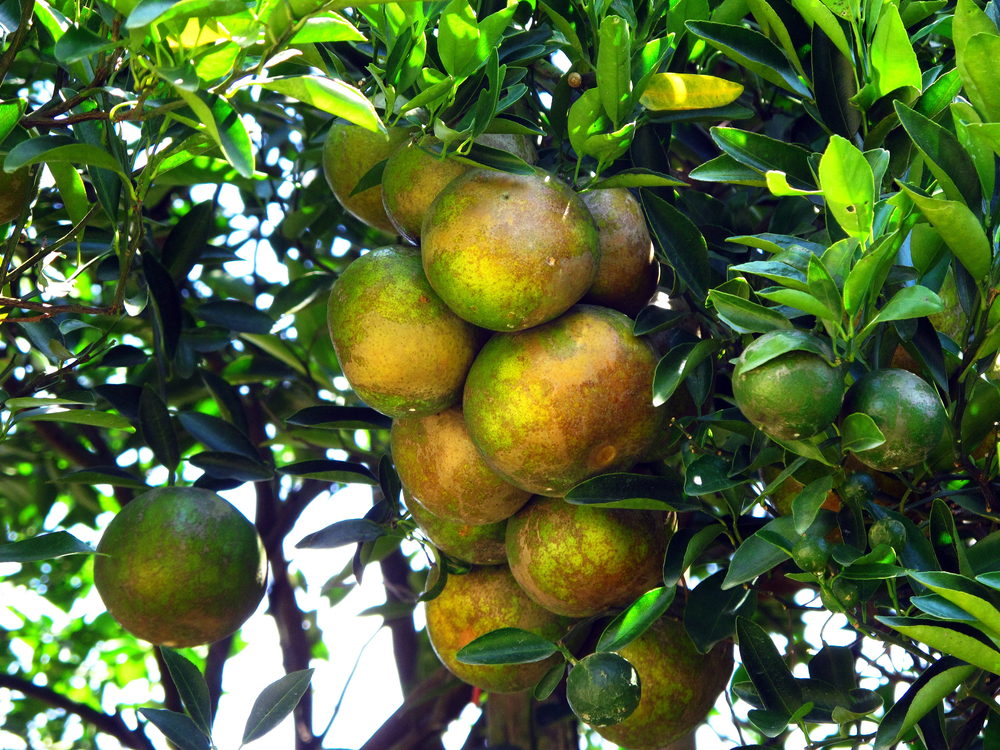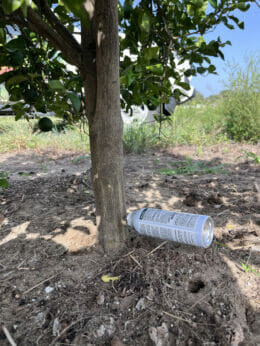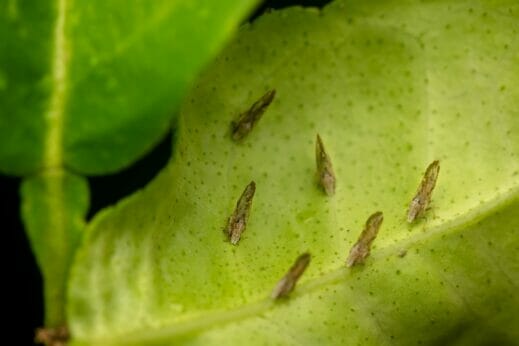Researchers are continuing to work on treatments for the devastating disease. Two new formulas now show promising results, and they could change the downward trajectory of the citrus industry.

Citrus greening, a disease with no cure, has torn through citrus groves in Florida, Louisiana, Texas and around the world. The disease is spread through the Asian citrus psyllid, which inserts a bacteria into the tree, slowly killing it. While a cure for the disease may still be several years off, two new treatments, using two different delivery methods, are now giving growers more options to help defend their groves from the worst of the disease.
In Florida, where citrus greening has shrunk the orange and grapefruit yields by more than half, the department of agriculture and community services has approved a new treatment from Massachusetts-based Invaio. The company’s “Citrus Health” solution suppresses the bacteria present in an infected tree, and it has shown a yield increase of 30 percent after one application. The trademarked Trecise application method means growers are able to use far less of the solution than a traditional pesticide.
The common way of injecting solutions into trees is to bore a hole in the trunk, saturate it with the solution and let the tree sponge it up from there. But young saplings have small trunks that don’t allow for a traditional injection. That’s where the Trecise application comes in, says Dave Gerrard, head of commercial business for the company.
Using a small port roughly the size of a phone charger, the solution can stream directly into the tree’s tissue. “We can start treating trees about two months out of the greenhouse and jump on those trees early,” says Gerrard. “By concentrating the active [ingredients] in the vascular system, that lets us use a lower dose. We’re reducing the dose from a traditional drilling method about five to eight times.” The port system also allows Invaio to make successive applications to a tree without having to drill a new hole each time.

A Trecise cannister attached to an orange tree. Photography courtesy of Invaio.
The new form of precision application not only allows growers to cut down on how much product they use but Gerrard says he hopes it can be used to “stack” treatments together in the future. “We’re testing biological insecticide, conventional insecticides. Eventually, I think we’ll test RNA therapies,” says Gerrard. “If you get that injection platform [to be an] established practice by farmers, then you can start stacking stuff in there and change the way the grove is managed. You can get really sharp.”
Initial testing of Citrus Health shows promising results. Within the first application, trees have shown an increased yield of around 30 percent. But Gerrard says the really impressive numbers come upon the second application. “When we’ve done our second-year plots, we’re seeing numbers in the 115-percent improvement [range], kind of doubling [the yield of untreated trees].” Gerrard says there are more treatments planned for the test groves this fall and in the spring of 2024, but Invaio is ready to take Citrus Health to a wider market.
At the federal level, new research is also showing promising results. Last month, researchers from the USDA’s Agricultural Research Service [ARS] announced the development of a new way to strengthen a tree’s immunity to the disease.
In order to strengthen a tree’s resistance to disease, researchers are employing agrobacteria. “Agrobacteria is a microbe that originated in soil but has been turned into a plant engineering tool,” says geneticist James Thomson in a release. “Essentially, you clone the DNA of interest [in this case, from plants that have a natural resistance to the pathogen of concern] and add it to the agrobacteria; then the agrobacteria adds that specific bit of DNA to the genome.”

The Asian citrus psyllid on a citrus leaf. Photography by Shutterstock.
The cloned DNA does not necessarily come from other citrus sources. As there is no citrus variety wholly immune to citrus greening, researchers looked at other plant sources for their DNA. They found genes that elicited an immune response in grapes, tomatoes and cress. Initial testing of the target genes was done in a potato as a model system.
The goal now is to get this information and technology into tree nurseries, where growers could purchase trees from the treated stock, known as transgenic trees. However, it’s too early to tell when the stock will make it to a larger market. First, researchers want to complete more tests on citrus and develop multiple transgenic plants.
In the meantime, there are close to 2,000 ARS researchers across the country looking at crop diseases. “I think ARS’s coordinated national response and team approach to science for solving citrus greening is a model for other challenges in tree and fruit crops,” says Tim Rinehart, a national program leader with ARS, in an email. In the university system, potential treatments have come out of the University of California, Riverside and Purdue, among others.
The cost of citrus greening in the industry has been immense. In the 2003-2004 growing season, Florida orange growers filled 240 million boxes of oranges, each weighing 90 pounds. In the 2021-2022 season, they filled 40 million boxes. That’s just 16 percent of the yield the region was producing 20 years ago.
“If you imagine the effect that had on the farmers, the number of actively managed acres in the state is probably half of what it was. There are farmers that haven’t had a positive cash flow out of those acres in two or three years now, maybe even longer,” says Gerrard. “Working with [these growers] and giving them reason to hope that they can manage their way out of this and give them a reason to believe that the industry can continue and be a sustainable industry in Florida… it’s probably one of the best things I’ve done.”